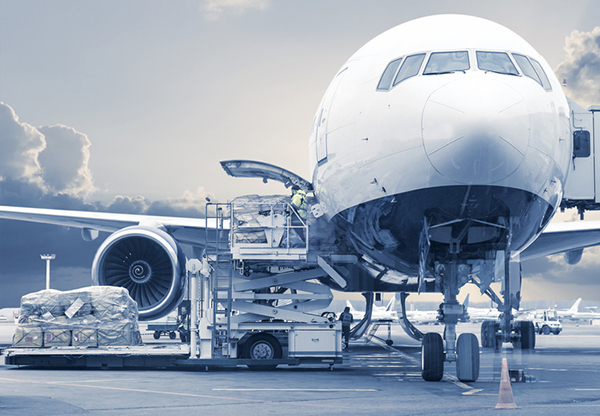 Editor's Note: With the passing of last month's annual Air Forwarders Association conference in Las Vegas, we caught up with the AFA's executive director Brandon Freid for this exclusive interview which first appeared in our sister publication—Logistics Management.
Editor's Note: With the passing of last month's annual Air Forwarders Association conference in Las Vegas, we caught up with the AFA's executive director Brandon Freid for this exclusive interview which first appeared in our sister publication—Logistics Management.
Logistics Management: How may we best summarize the current state of the air cargo market? Does it continue to strengthen, or has it plateaued?
Brandon Fried: The past year was very robust and at this point, we have seen some softening of demand in the market. We however, remain cautiously optimistic for the year ahead.
LM: What are the biggest macroeconomic drivers for the industry and how are they re-shaping air cargo market?
Fried: Of course, consumer confidence is a significant driver because if buyers are not feeling comfortable spending, our economy feels the pain. We see this reflected in manufacturing, retail and e-commerce sales.
Government actions around the globe including trade agreements, looming tariffs, security concerns with the U.S. and North Korea, India and Pakistan, civil unrest in Latin America and the Middle East have an adverse impact. Of course, tax policy here and abroad also influences the economy as well.
LM: Where are volumes headed? Why?
Fried: If my crystal ball had that sort of clarity, I would not be sitting here today but the fundamentals look strong. The wildcards previously mentioned are what keeps folks up at night.
LM: Where are rates headed? Why?
Fried: Airfreight is probably one of the purest forms of supply and demand pricing. If volumes increase, so will air cargo pricing. With that considered, fuel prices can move rates very quickly, regardless of demand.
LM: Can you provide an assessment of global e-commerce airfreight volumes and reflect on the “Amazon Air” effect?
Fried: Though I have no unique hard data, anecdotal stories tell us that the online retail megatrend is taking an adverse toll of traditional brick and mortar retail. We need to remember however, that air cargo is comprised of three silos including finished goods, manufacturing and assembly components and special niches including perishables and pharmaceuticals. While e-commerce affects some of these distribution channels, there are exceptions.
As for the “Amazon Air” effect, large scale firms operating proprietary fleets conceptually is not new. After all, many have run their own trucking operations for years. This can be both good and bad news for our industry. Amazon Air removes freight volumes from traditional carriers but also frees up capacity for lower volume competitors in the market. Operators are distracted because having their own fleets requires a “feed the beast” focus instead searching for a more strategic, emerging opportunity vision.
LM: Which e-commerce companies are flying now, and what are their equipment needs?
Fried: At this point, only Amazon is flying its own aircraft, using third party contracted carriers. As for other e-commerce providers, most are using either integrator (UPS, DHL & FedEx), postal service, passenger airline or freight forwarder options.
LM: How will shippers and carriers overcoming global cross-border e-commerce impediments?
Fried: Customs authorities around the globe have been agonizingly slow in adapting to changes in finished goods supply chains. This continues to be an ongoing challenge although in the U.S., the minimum value of shipments requiring formal Customs clearance increased to $800, thus extremely decreasing the need for a vast majority of express shipments purchased online.
LM: Can you give us an overview of the emerging cargo gateways in the developing world?
Fried: Freight gateways in the traditional sense are changing as we are seeing more point-to-point international services offered by airlines. The all-cargo operators are continuing their migration to the non-traditional secondary airports including Rickenbacker, Rockford, Oakland and of course, Cincinnati, Louisville and Memphis. The primary reason for this shift is lower costs, fewer infrastructure impediments and more available distribution networks.
LM: What about the more mature markets? Any new innovations taking place there?
Fried: The door-to-airport aspect is the easy part of the shipping process. The final mile of the fulfillment chain is the major focus today with ground providers of all sizes eligible and sought after to deliver online shipments direct to the customer.
LM: Finally, what are the implications of the intensive development in China, and role of e-commerce is playing in infrastructure planning?
Fried: As China's infrastructure has finally developed to accommodate the demands of e-commerce related business, trade uncertainty caused by tariffs and higher Chinese wages are creating a manufacturing shift to other locations outside the country. We are beginning to see new sources of products, driven by online ordering coming from Viet Nam, Thailand, Laos, Myanmar, Cambodia and of course, India. If China and the U.S. are able to strike a deal on tariffs, thereby relieving some of the trade pressure, perhaps the shift will slow but we should continue to expect companies to save manufacturing costs where possible.
SC
MR


Latest Supply Chain News
- Technology’s role in mending supply chain fragility after recent disruptions
- Tech investments bring revenue increases, survey finds
- Survey reveals strategies for addressing supply chain, logistics labor shortages
- Israel, Ukraine aid package to increase pressure on aerospace and defense supply chains
- How CPG brands can deliver on supplier diversity promises
- More News
Latest Podcast

 Explore
Explore
Business Management News
- Technology’s role in mending supply chain fragility after recent disruptions
- Survey reveals strategies for addressing supply chain, logistics labor shortages
- How CPG brands can deliver on supplier diversity promises
- How S&OP provides the answer to in-demand products
- AI, virtual reality is bringing experiential learning into the modern age
- Tips for CIOs to overcome technology talent acquisition troubles
- More Business Management
Latest Business Management Resources

Subscribe

Supply Chain Management Review delivers the best industry content.

Editors’ Picks





